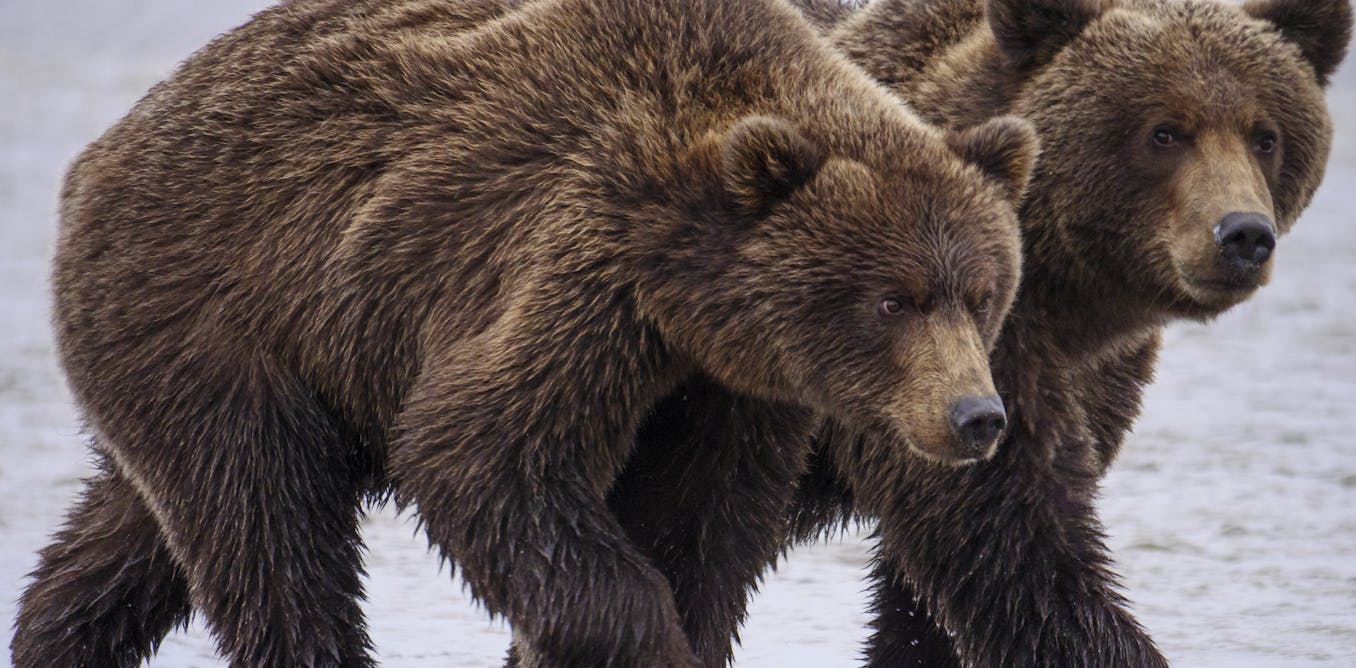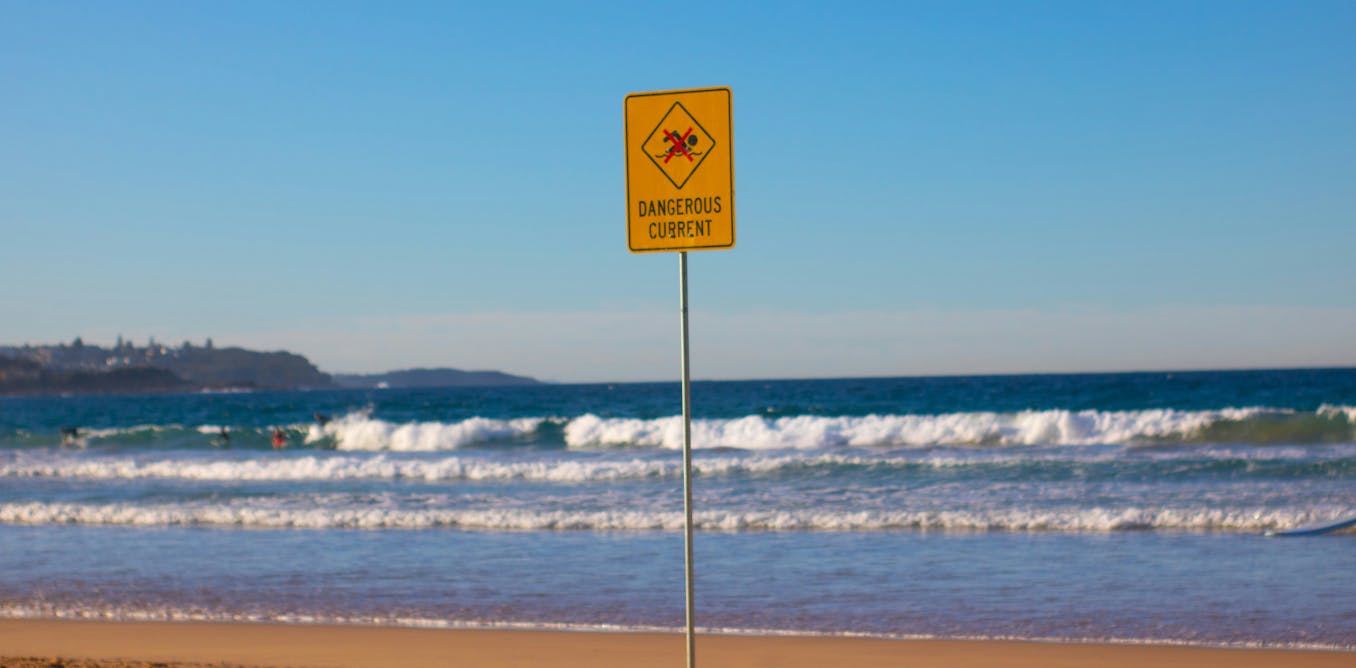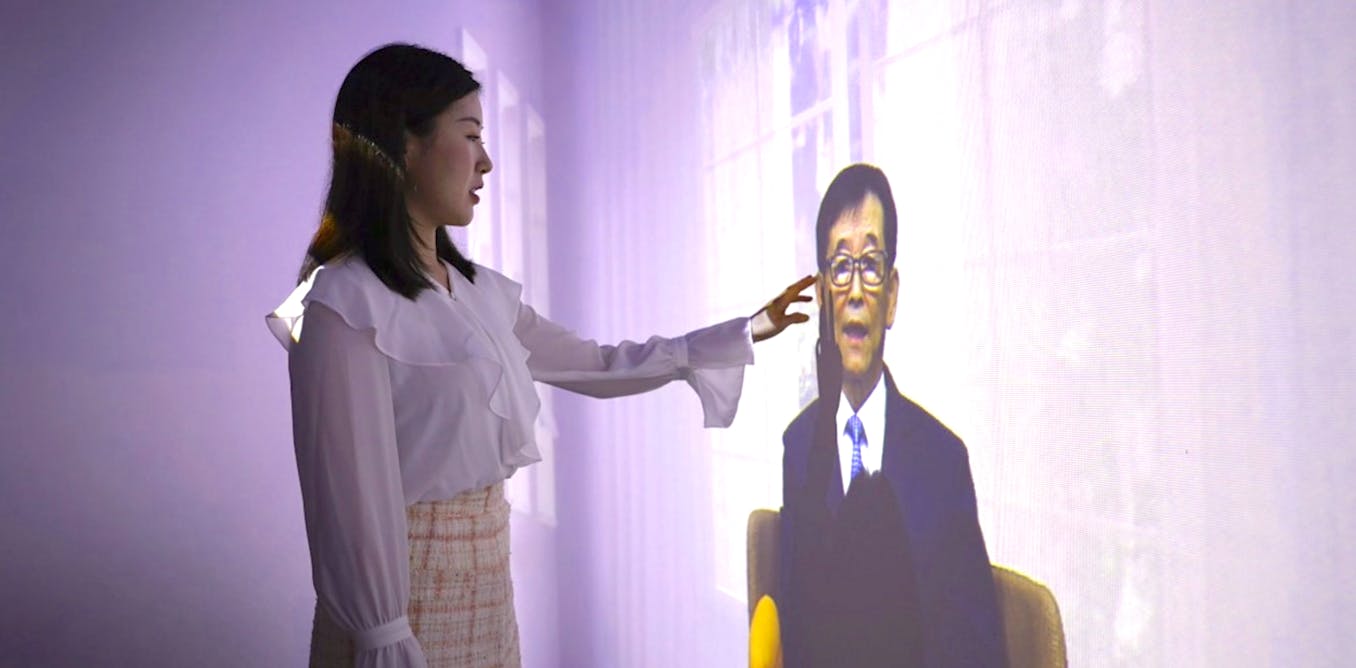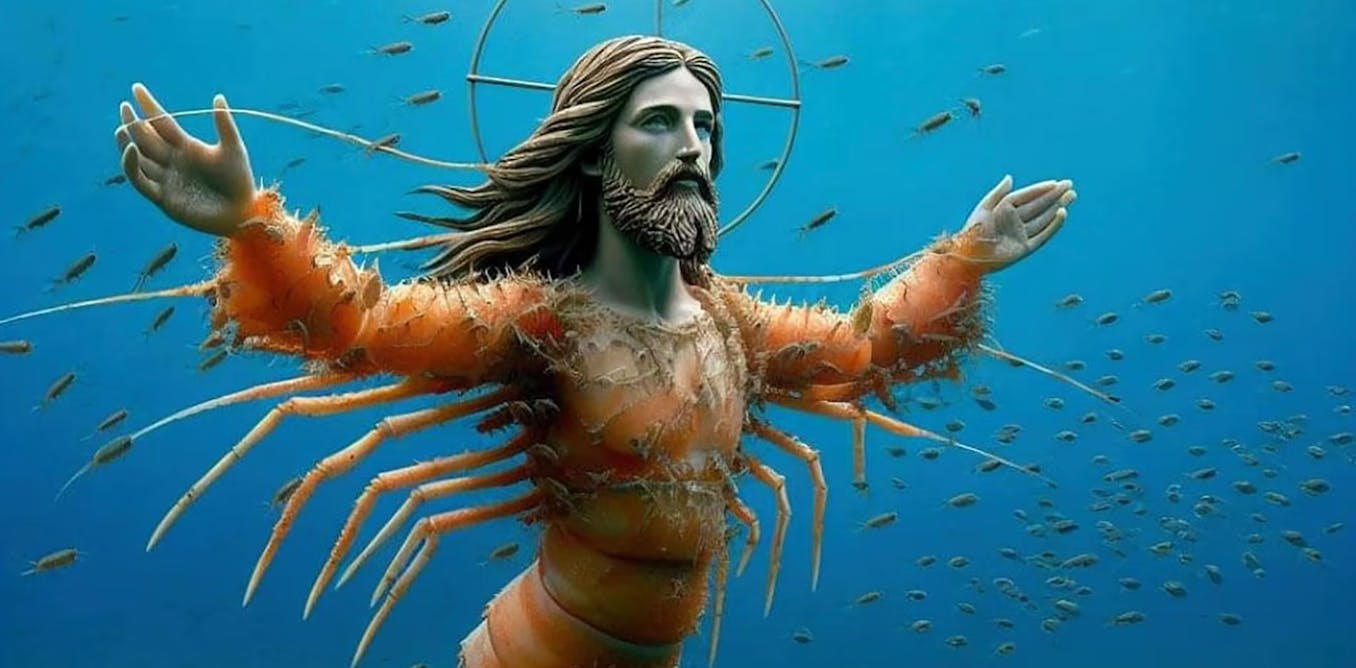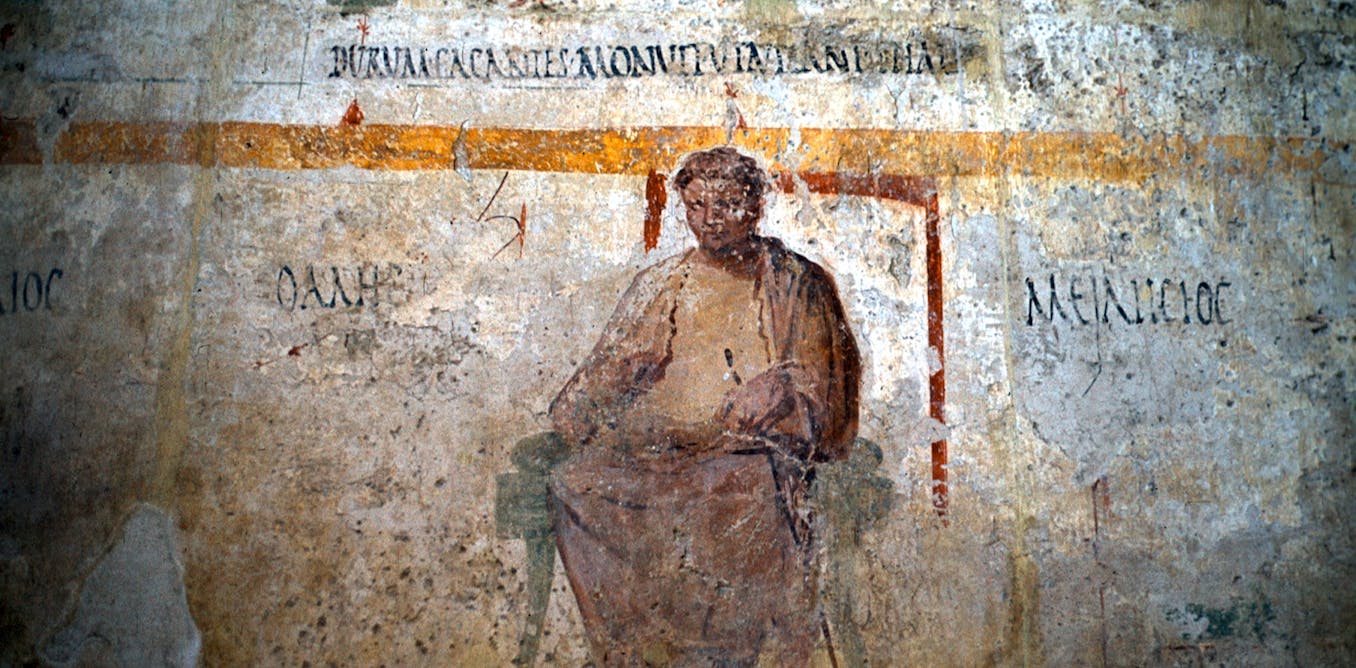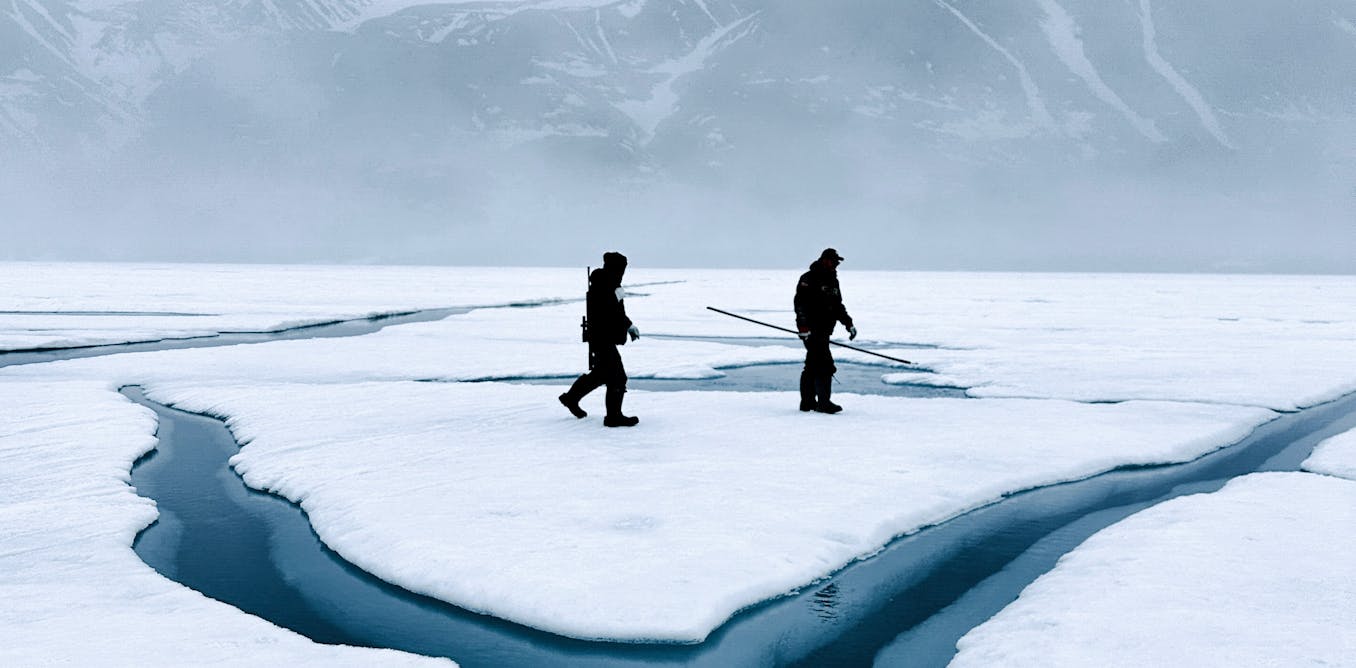Are you ready to witness the upcoming total solar eclipse on April 8th, 2024? NASA is here to help you prepare for this rare celestial event that will sweep across North America, passing over Mexico, the United States, and Canada. In a recent NASA Science Live video, experts discussed the excitement surrounding the total solar eclipse and provided valuable information on how to safely view and photograph the event.
During the live broadcast, viewers had the opportunity to ask questions about the eclipse, NASA’s missions, and the science behind this natural phenomenon. From discussing the different phases of the eclipse to explaining the effects of solar flares, the experts covered a wide range of topics to ensure viewers were well-informed and prepared for the upcoming event.
Whether you’re planning to watch the eclipse from within the path of totality or from a location where you’ll experience a partial eclipse, it’s important to follow safety protocols, use proper solar filters, and take the time to fully experience the wonders of nature. While the eclipse will only last a few minutes in totality, the experience will be unforgettable and will allow you to witness the beauty and power of our solar system.
So mark your calendar, set a reminder, and get ready to witness the last total solar eclipse to cross the contiguous United States for the next 20 years. Don’t miss this rare opportunity to be a part of a cosmic event that will unite millions of people in awe and appreciation of the wonders of the universe.
Watch the video by NASA
Video Transcript
E Welcome to NASA science live this is your chance to interact with NASA experts and have your questions answered in real time I’m your host Tahira Allen today we’re diving into the excitement surrounding the upcoming total solar eclipse that will cross North America passing over Mexico the United States
And Canada if you have questions throughout the show you can send them in using the hashtag asknasa on social media or drop them directly into the comment box wherever you’re watching now this Eclipse isn’t just any ordinary Celestial event it is a rare opportunity Unity for Millions to witness the moon
Completely block out the Sun turning day into dusk for those in the path of totality and get this this will be the last total solar eclipse to cross the contiguous United States for the next 20 years what makes this even more special is that an estimated 31.6 million people live within the path
Of totality and if you’re not in the path of totality no worries everyone in the contiguous United unit States will have the chance to see at least a partial solar eclipse now picture this a collective pause as people across the US gaze upward to experience The Wonder of
The cosmos together I can’t wait and today I’m joined by Dr Gina De braio a sun expert who’s going to walk us through how to prepare for the April 8th event Gina welcome hi TI thanks for having me and thank you so much for being here now can you kick off by
Telling our viewers a little bit about your role here at Nasa sure so I’m the deputy director of the heliophysics science division at NASA’s Goddard space flight center that means I’m helping to oversee an organization of scientists that are studying heliophysics which is the study of the Sun and its influence
On everything so we’re looking at the physics of the Sun but also how it impacts the Earth’s magnetic field the upper atmosphere and really just understanding how the whole system works together that is great and Gina I’m so happy to be here with you again today
Yes Gina and I had a blast hosting last year’s annular solar eclipse and I think it’s safe to say we are thrilled to be back again for the total solar eclipse now before we dive into some details Gina can you help clear something up for me sure what exactly sets an annular
Solar eclipse apart from a total solar eclipse like this year okay so when a solar eclipse happens the moon is going to cross in between the Earth and the Sun and when that happens the moon’s Shadow is cast on the on the earth and we can look
Up in the sky and see it now for an annular eclipse the moon is going to be just a little bit further away so that it doesn’t completely block out the Sun and that’s what you can see on the screen here you’re left with a Ring of
Fire in the Sky now for a total solar eclipse the moon is going to be closer to the Earth so that the sun is completely blocked and that way we can see the solar Corona it’s that hot upper atmosphere of the Sun that we can’t see with our visible eyes on a day-to-day
Basis so it’s really good to know that difference because you know it’s my understanding that in total solar eclipse the safety tips then are a little bit different than an annular right exactly and so for our viewers at home we have a special guest someone you might recognize who’s here to let us
Know how to safely view the April 8th event hi Eclipse enthusiasts Lance Bass here and I want to tell you how to protect those eyes and stay safe during a solar eclipse during these celestial events the sun earth and moon are in sync creating solar eclipses you can look directly at the
Sun during a total solar eclipse but only when it’s completely covered by the moon for a brief period known as totality this is a really special moment at all other times you should wear eclipse glasses so that you don’t say bye-bye-bye to your vision seriously and eclipse glasses are not the same as
Regular sunglasses no they’re not safe solar viewers are thousands of times darker and will have a specific certification that you should look for right here don’t be a space cowboy and try to look directly at the sun if you don’t have eclipse glasses you can use an indirect viewing method like a
Pinhole projector you can make one of these with something as simple as an index card with a hole or a colander or even your hands with a sun at your back you can safely project an image of the sun through the hole onto a nearby surface like the ground it’s going to be
Me who is wearing my eclipse glasses and so are you okay we are already seeing a lot of questions pouring in online from our viewers watching so let’s jump right into this Q&A now remember if you’re watching live you can submit your own questions for Gina using the hash
Asknasa or by posting them in the comments wherever you’re watching today all righty Gina our first question question is from oh it actually looks like so we’ve got kind of a group question here okay it looks like a lot of people watching are asking about notices that may have
Been issued in certain areas with guidance on how to prepare for crowds and um preventative measures uh meant to reduce traffic could you give us a little bit more info on how to best prepare for April 8th sure so as you said earlier to hear it uh along the
Path of totality we have about 31 million people lot people which is so cool to so it’s already crowded to begin with and of course we’ll have people traveling into that area to make it even more crowded so you know just think of the preventative measures that you can
Take in case you get stuck in traffic so make sure you have gas in the tank make sure if uh you have a battery operated car you you’ve charged up you have some extra food and water with you uh if there are traffic lines you know just be
Prepared to have patience and wait a little bit for that thank you Gina and so we have an our next question is from a user on Facebook who wants to know what science will be done during the total solar eclipse right the one of the things that we’re most excited for at
Nasa is actually performing different science experiments during the eclipse now a favorite that I like to talk about is that we’re using NASA’s WB 57 high altitude research jet to perform some experiments so the jet yeah the Jet’s going to fly across the path of totality
So that it gets a little bit longer in totality than if you were just standing on the ground and what that means is that the instruments on board are going to look up at the solar Corona and take images so that we can study the composition of the corona understand how
Particles are accelerated and charged and also be able to study dust that is around the Sun that we can’t really understand when we look at just on a day-to-day basis either and so and this is only an experiment that can be done during a total solar eclipse is that
Right right so so we do have instruments called Corona graphs that are essentially artificial eclipses and they will block out the Sun so that we can study the corona but the way that the light bends around these Corona graphs we can’t actually get deep down into the
Corona itself in that lower part of it so for the total solar eclipse that happens naturally it allows us to get down into the the lower part of the corona which means this is one of the only times that we can you know study this area of the Sun that is amazing and
So we have our next question on Jordan uh from Jordan on YouTube who wants to know why is it bad to view a solar eclipse directly okay thanks for that question Jordan so so we want to be really careful about eye safety during any eclipse or or even on a day-to-day
Basis you don’t want to look at the Sun so that you’re not causing any permanent damage to your eyes now the way that it works for a total solar eclipse is that during the partial phases you need to have the proper safety viewing that we just heard about
Um you can have the eclipse viewing glasses you can make a pinhole projector and you need to use that to see the partial eclipse if you’re in the path of totality during totality you don’t need to have those glasses you can look directly up at the sky and see the sun
Because it will be blocked so you’re just looking at that Corona you’re not actually going to be looking at the sun but only for totality and I have a great followup from Mouse 757 on YouTube who wants to know where is the path of totality for this event okay you can go
To the NASA website go. nasa.gov Eclipse Explorer and it will show you the map so that you can actually see where totality is located but across the US it will stretch beginning down in Texas all the way through Ohio we’ll have a station in Cleveland doing the broadcast too and
Then up through main as well yeah exactly and thank you for that uh and then our next question is from Matthew Henson on YouTube who asks what happens to the Moon and the Sun as seen from Earth during the eclipse so we have the Sun in the sky and the moon will be
Crossing in front of the Sun so when you’re when you’re looking up at the sky with your proper safety gear what you’ll see is that the sun slowly becomes covered by the moon and that’s the that’s our perspective from the surface of the Earth basically is that we’re
Going to see the sun kind of disappear as the moon moves in front of it that is so cool too that the Moon is just the right size you know to cover the sun yes during this event and so we have Alana Franklin on YouTube who wants to know
How long will the eclipse last so if you’re in the path of totality maximum totality will be around 4 and 1/2 minutes long it depends though where you even fall within that path if you’re on the edges it could be a little shorter you want to be kind of as deep
Within it as you can and then you’ll get that maximum totality but I will say that this Eclipse that we’re having coming up in April totality is lasting longer than it did in 2017 when we had the eclipse Across America as well do you know why so it just has to do with
Kind of where the Moon is in its orbit how far it is away from the Sun and uh for that one in 2017 maximum totality was only about 2 minutes a little bit more than that so we’re almost dou doubled oh man that’s so that is so cool
To know so our next question is from a viewer on X who wants to know what tips do you have of taking pictures of eclipses okay well if you are taking pictures of eclipses during totality you can use your phone that’s fine the same way that we can look at the eclipse with
Our eyes during totality only you can also use your phone to take pictures now at any other part you need to have a proper solar filter in order to take those photographs so not during a partial eclipse correct yeah anytime okay so our next question is from Ryan on
YouTube who asks when was the last eclipse and when is the next one okay it depends on how you define Eclipse so in this context let’s talk about total yep total eclipses a total solar eclipse so the last one that crossed through the us as I just mentioned was in 2017 and I
Was actually fortunate enough to to see that myself so I was really excited to see it yeah so the next one coming up though isn’t for another 20 years in the across the US so you’ll have to really you know take advantage of this one unless you want to wait 20 years from
Now yeah absolutely and so actually oh this is one of my favorite questions we have booo on Wilbur on YouTube who wants to know do animals react in a certain way you know what are some of these changes that we can expect during a total solar eclipse right when when the
Eclipse is taking place it really gives that feeling of Dusk and nature reacts as if it is DUS so if you have the opportunity to view the eclipse also in more of a quiet place where you can appreciate nature you might be able to see the birds
Flying back into the trees to nest for the night or you can hear the Crickets come out and chirp and and just kind of look around and watch nature because it really does react to to what’s going on with the eclipse it is so cool to think
About too you know that this is just like a multisensory experience for everybody um and so our next question is another I’d say group question we are getting a lot of questions about the timing of the eclipse in specific areas around the country and you know actually luckily
NASA’s got us covered with that with an incredible tool to help with just this as Gina mentioned earlier it’s called the eclipse Explorer map and our friend James try is back here and he’s going to walk us through how we’re going to use this new map to prepare for April
8th have you ever wondered how to track a solar eclipse down to the exact second NASA has you covered for the April 8th 2024 total solar eclipse that would be sweeping across North America I’m James try and I’m going to walk you through how to use NASA’s Eclipse Explorer an
Interactive map designed to help you plan your Eclipse viewing experience this interactive map offers layers of detail that you can toggle on or off to explore each facet at your own pace start by visiting go. n.gov eclipse Explorer today I’m showing you how to prepare for the April 8th
Total solar eclipse so let’s jump in this is the map with the eclipse path a menu should appear on the left which you can expand or collapse with this little arrow that you see right here with this menu you can manipulate the map in a lot
Of ways but I first want to show you how you can look up what the eclipse will look like in your location and the timing of when you should look up with proper eye protection of course I’m at Nasa Goddard in Green Belt Maryland right now so I’m going to type that that
Into our ZIP code City Bar and hit enter and it will snap right to our location green Bel Maryland and you’ll notice when the map zoomed in it displayed a box with information about what I will see and when in my location you can click on the various phases of
The eclipse with these little icons right here to see what the sum would look like at different points during the eclipse the map also includes information about the current weather and cloud coverage along with the countdown to the maximum eclipse and the percent of the Sun that would be covered
In your area if you’re located in the path of totality where you have the chance to see the total solar eclipse your information box will have a special feature when you click on the maximum Eclipse to demo that let me go over to Cleveland Ohio which is in the path of
Totality and snap that up here for you so in the spot where we saw the percent of the sun covered in greenbell now instead there’s the duration of totality which for Cleveland is 3 minutes and 49 seconds that’s when the moon will completely block the Sun and when I
Click on the time of toal and to be precise for Cleveland it’s 31345 p.m. you see it snaps directly to what the sun’s upper atmosphere called the corona will look like from Earth a total solar eclipse is the only time we can see this faint region of the sun with our own
Eyes the corona also holds clues for scientists about the sun’s behavior and activity some other cool features include the ability to use the slider bar that you see right here to move the Moon Shadow across the path of totality you can see it sliding like that on
April 8th when the eclipse is happening you can select this live button that’s right here and it will track the eclipse in real time by clicking the percent coverage that’s right here I can zoom out a little bit to show this you can see just how much of the sun will be
Covered by the moon in any given area even outside that path of totality and remember it is only safe to look directly at the sun without eye protection during totality at all other times including when the sun isn’t blocked at all and during a partial solar eclipse you should wear eclipse
Glasses or view through an indirect method like a pinhole projector for safety tips from NASA visit go. nasa.gov SL Eclipse eyes safety there are many more layers and features to dive into on the eclipse Explorer map so I encourage you to take a look to prepare before the total solar eclipse crosses North
America on April 8th and join me along with other NASA science communicators and experts on April 8th for the NASA broadcast starting at 1:00 p.m. eastern time we’ll be taking you with us at as the eclipse moves across the country thank you and enjoy the total solar eclipse impressive right now you can
Access this map from the comfort of your own home and witness the eclipse journey in real time on April 8th by visiting go. nasa.gov Eclipse Explorer now Gina this map is one way for folks at home to get involved in the eclipse but I understand there are some other ways that people
Can play a true Hands-On role in this April 8th event can you tell us a little bit more about those right we have different projects among NASA where the public can get involved in order to really contribute to our understanding of the eclipse and Eclipse science so
Two of those projects that I want to talk about the first one is Globe Observer and with globe Observer you download the app to your phone you need a thermometer and what you do is you actually take measurements before during and after the eclipse of the temperature
Where you you record it in the app you also take pictures it is it’s very simple for people at home to do um you take pictures of cloud coverage as well because what that’s doing is it’s reporting the conditions local to you so that we can understand what changes the
Sun is actually having on our atmosphere during the eclipse so that’s one of the the projects where anybody in the public can get involved now the other one is called Sun Sketcher and this one once again requires an app from your phone that you download and you’re going to
Put your phone down and actually just let it take pictures during the eclipse and what it will do is focus on the Bailey beads that form so that’s kind of the light that you see peeking around the Moon as it’s covering the sun oh cool and those Bailey beads are the
Light coming through kind of the Peaks and valleys on the moon where it helps us to understand the size of the sun and the shape of the Sun and really kind of what’s going on there with the structure of the Sun and so with that one again
Just a simple app that you download you leave your phone go and it takes the measurements for you I mean technology these days you know right like it it just completely fascinates me that you can do NASA science from your cell phone and if you’re interested in learning
More about these projects that Gina just mentioned or other ways that you can do NASA science visit go. nasa.gov do Eclipse science now Gina not only will we be able to witness a total solar eclipse on April 8th I’ve heard that for th for those in the path of
Totality you could also see some other things in the sky around that time that’s right could you tell us a little bit about what we could expect sure so we actually have the opportunity to see some planets out in the sky during totality because when totality occurs
It’s going to cover up the sun and it makes the sky darker so we have the opportunity as you see on the screen here to see Jupiter um also Venus those are going to be two of the brightest planets in the sky but then right on there Mercury Saturn Mars those are all
Faintly visible and then even more exciting there’s a comet that can be visible too that’s Comet 12p it’s it’s faint but depending on you know how dark your area is and and whether you can see it in the sky take a look and and this will be an interesting planetary
Alignment absolutely and I mean as if this day wasn’t you know rare exciting enough now we’ve got this planetary alignment we’ve got a comet right and so fingers crossed on clear skies now we have some more questions coming in let’s get to a few of them sounds good all
Right we have Twilight linkable on YouTube who asks I heard that some eclipse glasses don’t have the right specifications to protect your eyes properly uh when shopping for glasses what specifications do I need that will protect the eyes sure when you’re when you’re buying those glasses of course
You always want to get them from a credible Source One way to check is there’s a a standardized number it’s called the iso you want to look for number 12322 and I think we have some people from my NASA team here that can input that in the chat so that you can make
Sure that you’re getting those uh glasses with the right safety specs as well okay great thank you thank you for that and so our next question is from Antonio rabid on YouTube who asks do we need to know what do we know what the weather will be like during the eclipse
Right so the weather will depend on whatever location you’re in yeah but but we just heard about that Eclipse Explorer map and that actually has time weather information in it where you go to your location and you can find out what the weather will be during the
Eclipse there I have a I’d say a good followup to that Halloween Hol 31 on YouTube asks will temperature change during totality oh yes so this is something that is one of the most fun things to experience and and we experienced this during the end ofcp too
It completely blew my mind right we’re shivering up on stage a little bit Yeah the temperature will drop U you know the sun is blocked and and the energy the heat coming from from the Sun into the atmosphere it changes the atmosphere and that’s also why we have this globe
Observer uh public project that we were talking about to measure those temperature changes so you know there’s there’s different things that will affect how much the temperature will change for instance how humid it is in your location but you will feel that temperature drop and it can be as large
As 10 to 15 degrees Yeah I mean even just for what we experienced with annular like you said I mean we’re like shivering on stage and then for totality what we expect it to be even a a little bit more yeah probably a little bit more
Than what we had for annular but but even for the annular Eclipse a majority of the sun was blocked so um you know get chillier in both of those instances so I know we touched on this earlier but for those of us who are just tuning in and watching can you explain
Again what is the key difference between an annular solar eclipse and a total solar eclipse right and so basically a solar eclipse happens when the moon crosses in front of the Earth in between the Earth and the sun now for annular eclipse the moon will not be blocking
The sun completely it’s going to leave a ring of fire because the Moon is just a little bit farther from the earth in this case for the total solar eclipse the moon will be slightly closer to the to the Earth and it will block out the
Sun so that we can see that upper atmosphere of the Sun the corona as the sun is obstructed during that totality so so the viewing here that you see on the screen that’s the main difference in the effects whether you get to see the solar Corona or if you’re looking at the
Ring of Fire in the Sky and so we’ve been touching a lot about you know the path of totality and being in totality for a total solar eclipse and so we’ve got a few viewers who want to know you know what if I’m not in the path of
Totality what can I expect on April 8th yeah and you know it’s just as exciting and spectacular if you’re not in the path of totality you won’t get to see the corona because the sun won’t be completely covered but you’ll still get to experience a partial eclipse and
Depending on where you are the amount of that partial eclipse will vary you can go to the eclipse Explorer map to see just what coverage you have but viewing a partial eclipse is really exciting too and you’ll still get some of those temperature changes and and the changes
Around you as well um so whether you’re in totality or seeing that partial eclipse it’s still exciting yeah so we have uh mayor yusman on YouTube who wants to know will is cell phone disruption expected you know will this affect any of our Communications during the eclipse oh that’s a that’s a great
Question and so you know there is space weather activity that can disrupt our cell phones when the sun is sending harmful radiation out into space um you know it can impact the Earth’s upper atmosphere and cause minor blips in in cell phone however um first of all we
Have different things in place to avoid that and specifically during the eclipse that’s not really something that we have to be worried about but I’m glad that people are thinking in that direction that’s great yeah and you know you mentioned studying space weather things like that we have another uh viewer who
Wants to know what missions does NASA have that study the Sun and what Mysteries are we hoping to solve okay well right now NASA in the heliophysics science division we have the Parker solar probe Mission and this mission is actually flying into the upper atmosphere of the Sun so that solar
Corona that we’re talking about viewing during the eclipse par actually flies through it and touches it and this is the first spacecraft to ever get this close to the Sun in fact on December 24th of this year it will have its closest approach flying nine solar radi
Close to the Sun and that that might sound far but it’s actually the closest that a spacecraft have ever gotten so that we can really figure out how the physics operates in this region okay now nine solar radi can you give us an idea
Oh yeah so I’m going to ask my team here to give us some stats on that and put it in the chat just so we can get it maybe into miles for people to understand but but it is much closer to the Sun than we are so that we can touch the atmosphere
There awesome and so our next question actually again has to deal you know with the sun and its activity it’s from Fox McLoud on YouTube who wants to know will we see solar flares the during the eclipse that could very well happen now the sun has an 11-year activity cycle
Where the activity is ramping up up and down and when it ramps up we see more of those solar flares we see coronal mass ejections and more and right now we are gearing towards solar maximum which means we have more of this solar activity happening and you can see the
Explosive flares occurring so if we were ever to see some of this activity during the eclipse this would be the time because we have tons of activity happening so fingers crossed um with your your solar telescopes or you’re you’re viewing that we can see some solar flares
Erupting is there any certain science we can only conduct during a total solar eclipse this is another viewer on YouTube okay right so some of the experiments that we have going on with NASA are things that we can only do during the eclipse um one project that
I’ll talk about is looking at ham radio operations and actually how the radio signals are impacted over the atmosphere so the radio signals will be sent in the atmosphere and during the eclipse the atmosphere changes and what we can do is have these ham radio operators send their signals to really understand the
Impacts of the sun on the upper atmosphere and how it might change those radio communications in my follow-up question we have Mel on YouTube who going back to you know some Eclipse safety wants to know if we are not in the path of totality do you still need to wear those eclipse
Glasses yes the short answer is yes especially if you’re not in the path of totality you always need to be using those viewing glasses or kind of your atome products like a colander that allows the Sun’s light to come through the holes you can make your own pinhole projection something that’s really easy
You can just take your hands and and kind of weave them together to create your own holes and you put them down towards the ground you let the sun come through and you look at the ground that’s one way to see the and what are you seeing on the ground then at that
Point you’ll actually see what looks like the crescent Suns that that is the eclipse that’s happening so you’ll see the partial eclipse being projected onto the ground and so my next question is from okay we have somebody that actually has a follow-up to our conversation earlier about the solar flares okay so
They want to know are solar flares dangerous to us on Earth great oh this is a great question so the Earth has a magnetic field that Shields us from a lot of these you know radiation particles that come from the Sun so for us you know not first of all not every
Solar flare will be directed towards Earth they’re directed in all different directions towards different planets or or not even towards any planets at all the ones that are directed towards Earth really our magnetic field and our atmosphere Works to Shield us from a majority of those particles now when we
Have astronauts in space we do have different protective measures that we take to protect them we work on predicting when these flares might take place when they might arrive and our astronauts have radiation covering that they can actually Shield themselves if they need to and so I actually want to
Stay on that topic that’s a great followup well I have a great followup to that topic for someone who wants to know you know how does the study of the sun I guess heloh physicists work with our efforts of sending humans into space to the Moon you know and even farther into
The solar system right well personally some of the research that I do is on Mars and understanding how the Sun impacts Mars and we want to understand this because one day we’re aiming to send humans to Mars so we really need to understand how this radiation coming
From the Sun or these solar flares that we’re talking about how they might impact the different planets we can take data from different NASA missions that are studying these planets to really assess how the atmosphere or a planet’s magnetic field might be impacted by particles coming from the sun and then
We create tools that we can use to protect our astronauts when they go to travel to other places such as the moon or Mars so another great follow-up inspector on YouTube wants to know will the International Space Station be affected by this total solar eclipse then if you’re for astronauts that are
On the space station during the eclipse um if it is kind of crossing over the US region during the time of the eclipse the astronauts are able to view it from a different vantage point now they’re looking down at the surface of the Earth so they would see the moon’s Shadow
Moving across earth yeah so it’s a different perspective than what we’re seeing you can see it on the screen there um that’s that’s from one of the previous eclipses that’s the Moon Shadow actually being cast onto the surface of Earth there you go as seen from the
Space station so that’s a a great View and a unique perspective to have that is that is and it’s really amazing that we are able to you know have photos from both the ground and space with the International Space Station Y and Mary Hart on YouTube wants to know for the
Total solar eclipse this year does NASA plan to photograph it from the ground at all yes so actually this is something where the public can once again get involved as long as you have the proper solar filter and a telescope you can take pictures of it um you know during
Totality as we said you can use your phone to take pictures of it it’s safe during totality to use your phone to take pictures uh photographs we have amateur astronomers and whatnot as well so these are ways that you don’t have to be a NASA scientist to photograph it as
Long as you know how to do it safely and and some of these images are just stunning to look at absolutely and I mean this is another you know good reminder of the volunteer project that you mentioned earlier Sun Sketcher right uh to where you download download an app
Put your phone down and you’re able to photograph the eclipse contribute to NASA science and you know enjoy the moment EX in the present moment yeah so oh this is a good one my next question is uh what was it like for you to watch the annular solar eclipse last year Well
We were together that’s I love this I will tell you my my experience with the annular Eclipse was so much different than the 2017 was that your that was my first and I will say you know viewing it it it almost felt fake it didn’t seem
Real to see the moon kind of coming yeah but on top of that it was the crowd around us that I remember I remember you know the minute before annuality people were just so excited and cheering so loudly that it felt like this experience that we were all sharing together and
And that was a lot of the fun to it too you know I think we were talking about how we got goosebumps during annularity it was really emotional I was not expecting for it to be so emotional I mean it was really just this perspective shift right to where you’re
You’re like wow I’m on Earth and we’re part of this larger system that’s moving in the universe and this will be my first total solar eclipse so I’m glad that we get to experience this again together yeah so our next question is from Bill Harvard on YouTube who wants
To know will an eclipse like this happen again right there we will have other total solar eclipses happen um the next one that will cross across the the United States won’t be for another 20 20 years so this will be kind of your last opportunity for two decades if you want
To see it within kind of the contiguous us but eclipses will occur elsewhere and uh you know most often it will be over the ocean just because the the Earth has more water than land but but yeah we we do have total solar eclipses now one
Thing that I I will add though is the moon is slowly moving away from the earth very slowly which means kind of many many many years from now there won’t be total solar solar eclipses at earth once the Moon is far far enough away that it can’t completely block out
The Sun so it’s really special right now that we’re able to enjoy this but that change will not take place in our lifetime it will it will be quite some time until it actually happens that is a very fun fact that was actually you know we have Stephen po Papa on YouTube who
Wanted to know does that mean in the far future um will eclipses be much different and so like you’re saying there’s a day and age where we won’t have these at all anymore right so we are really here during the right time the right moment to witness something
Like this Al together yeah and I mean the moon it’s moving it like centimeters per year away so very very slow R we don’t have to worry but okay if we were on Mars for example Mars has solar eclipses when when its moon cross in between Mars and the sun however they’re
Not as fascinating as our eclipses because they’re not total it it almost looks like a a Transit of a planet moving across the sun because it doesn’t cover it it doesn’t cover the sun completely so it it you could just see the moon Crossing and you can almost
Think of it as an annular Eclipse but the ring is much bigger than what we see here so earlier in the show you touched on Bailey’s beads and these different uh different types of things we might see during today’s event and we have um we have another viewer that wants to know
About these special features that only happen during a total solar eclipse can you like the diamond ring effect Bailey’s beads can you explain those for us sure so on the surface of the Moon you know there are craters there are Peaks there are valleys and when these biley beads or diamond rings occur
That’s where you see the light of the sun just kind of piercing through some of these surface features of the moon and the sun the sun just kind of Peaks out in between the Peaks and The Valleys um so that you can get that shiny diamond ring effect and and that really
Helps us to understand kind of the the Topography of the moon but the moon and and the surface features have also been studied very well by NASA’s lunar reconnaissance Orbiter Mission um so it’s fun to kind of see how we you know we make these measurements with our
Missions and then we can also study them during natural events like the eclipse and can you remind us what’s the difference between Bailey’s beads and the diamond effect are those the same thing they’re very similar yeah so so the diamond ring effect is more of that kind of wow factor that brighter shine
Where B’s beads you can see a few of them almost bubbling across the surface is what it looks like so they’re similar and they’re caused by similar effects but kind of just a difference in their characteristics and we have Katie Fischer on Facebook who wants to know
Will the solar uh total solar eclipse affect the tides so the the total solar eclipse will not affect the tides really that that’s going to be affected by the distance that the moon is from the earth so so as I said the Moon is slowly moving away from the Earth’s centimeters
Every year now over a greater time scale that will affect the tides um but not during the total solar eclipse and I actually our great team moderating earlier got us an answer you mentioned how Parker solar probe oh great on December 24th is going to make its
Closest approach to the Sun at about 9 solar radi that is 3.9 million miles there we go so yes absolutely and so our next question is from Leela koh’s Avery on Facebook who wants to know can I look at this safely a total solar eclipse uh through a telescope from North
Carolina okay so it it depends on your location and if you’re in the path of totality so check out our Eclipse Explorer map to see what kind of coverage you’ll get if you have totality then you can actually use your telescope to look at the sun without a filter
However if you’re in that partial area partial eclipse then you can use your telescope but you just need to make sure that you have uh that path of totality and so as you’re looking at the the map here showing the path of totality um you know North Carolina is going to get that
Partial eclipse so just make sure that you have a proper filter on your telescope when you’re viewing the eclipse okay still in the same light of viewing photographing the eclipse um we have a hat wearing Duck on YouTube who asks would it damage my phone camera if
I tried to take a time lapse of the partial eclipse through eclipse glasses okay that is one technique that uh people use is actually so you have your eclipse glasses that you can hold up to your eyes now you can put that in front of your phone to saf lay the pH
Put the glasses on what I would yeah because the one thing you don’t want to is put your glasses onto your phone and then accidentally you know try to look at the the sun when it’s partial so you can use those viewing glasses as a filter but just be careful you know
Anytime you’re you’re doing this absolutely and so sticking again kind of focusing on this path of totality we have James Finn on Facebook who asks how dark does it actually get in the path of totality it’s best described as a dusk feeling uh you’ll you’ll definitely see
The change I mean it’s not going to be completely nighttime because some of the Sun’s light will still be scattered around the the moon and and light up just a little bit of the atmosphere but it gets pretty dark um it’s pretty impressive darker than what we saw for
The annular Eclipse that’s for sure now for those of us who have not witnessed a total solar eclipse before you know could you tell us about your experience seeing one for the first time my my total solar eclipse uh so I was in Nashville in 2017 with my family and we
Were we were kind of off the beaten path in the middle of nowhere so we got to really experience the nature effect seeing the birds go to the trees hearing the Crickets come out U but I do remember once that totality occurred we were all just kind of looking at the sky
And kind of screaming and getting excited oooing and aing it was it’s just something that until you experience it it’s really hard to imagine but it’s so great so it’s it’s different than looking at a photo of it or something like that because a as we talked about
Earlier it is kind of all the senses right so you’re seeing the eclipse but you’re also hearing changes in nature you’re feeling the temperature drop and maybe the winds pick up a little bit in fact uh during the the 2017 eclipse in my experience we had some clouds start
To cover the sky just before totality and then as soon as totality hit those clouds dissipated and and went away so we got to see the changes on the atmosphere with our eyes as well and we covered this a little bit before but can you tell us about some of the
Experiments that NASA is running and can only run during a total solar eclipse yes uh so so let’s talk about the sounding Rockets that’s actually something that we haven’t hit on yet so we have three sounding rockets that will launching from our wups Flight Facility which is in chinka Virginia and these
Three rockets will be launching one will take off 35 minutes before totality one will take off during totality and then finally 35 minutes after and what we’re trying to study here is basically measuring directly the changes in the upper atmosphere where the where the Rockets are going to reach and we’re
Doing it before during and after so we can see the change kind of in how it propagates now now where these Rockets are launching it’s not actually going to be within the path but as the moon and its shadow as the shadow of the moon is moving across that path it’s having
Changes in the local atmosphere and they kind of propagate out almost like a boat going through the water and making a wake yeah it’s the kind of the same thing so we’re trying to see how those changes propagate out in the atmosphere so we’ve got a plane we’ve got Rockets
We got Rockets is there any other you know instrument that NASA is planning to use to study uh the solar cups I know last year for the anular we had balloons is there anything like that there are balloon projects in fact um led by various schools we have a ton of
Balloons that will be launching science balloons measuring all over um and so that’s something that you see on the screen here some of the students getting ready for those balloon experiments um there’s also radio telescopes in California that will be kind of measuring those radio waves coming from the Sun
Because any active regions that are occurring on the Sun at that time they’re going to be covered up by the moon so as as the radio telescope is just looking at the sun and these active regions are covered we can see it’s turning them on and off so we can see
Where the waves are coming from and and where they aren’t so to understand what the sources are basically so we’re studying this from you know every single angle everything that we can possibly do yes that is great so our next question is from uh Happy thumbs game on YouTube
Who wants to know for the solar eclipse will all of the United States be able to view it all of the 48 contiguous states will view some sort of eclipse if you’re in the path of totality you’ll have the opportunity to view that total solar eclipse if you’re not in the path of
Totality then that’s where you’ll see a partial eclipse so as long as you’re within those contiguous 48 states then yes you can see it and you hit on this a little bit earlier but why does this eclipse have totality for such a longer duration you know you mentioned that
This year is almost double from 2017 right why is that right the moon’s orbit actually isn’t circular around the sun it’s an it’s elliptical so it all depends on where the Moon is in its orbit and really how close the Moon is or how far it is from uh from the earth
And so for this one compared to 2017 we’re going to get that shadow uh just cast a little bit the the path will be a little bit wider the shadow is going to really make that eclipse last a little bit longer just based on where the Earth
Is with respect to the Sun and Bert on YouTube who wants to know being so close to the Equinox why is the path of totality at such an angle with the equator yeah so it depends the the moon’s orbit is tilted by 5° and of course at with Earth we have seasons as
Well so there’s kind of this game that you have to play between you know the the orbit right of the Earth and the moon and and how the Earth is tilted how the moon’s orbit is tilted and it it changes kind of the the geometry of where the eclipse occurs and and how
Long and everything so earlier you know we spoke a little bit about photographing a total eclipse with a cell phone now we have a viewer on YouTube who wants to know if pointing a telescope to the sun will damage the telescope uh during this event right we have filters for
Telescopes as well solar filters that you you put on your telescope so that you can safely view the eclipse um so that’s what I would recommend especially uh if you’re in that partial uh you know partial eclipse area now for the the total eclipse that’s when with our own
Eyes we don’t need to have the glasses on and you don’t need to have a filter uh for your Eclipse but it also depends on on what you’re trying to see if you’re trying to see that Corona in a certain light you might want a filter
For that too that allows you to take different types of images and and different science as well okay for those just joining us we have another question from scientific potato on YouTube who wants to know will animals under the total will animals under the total solar
Eclipse be acting weird they will be yes nature changes during the eclipses um it gets confused they nature basically thinks that the Sun is setting and that it’s nighttime and and that’s where we kind of have animals getting ready to go to sleep Birds going to the trees
Crickets that that come out and Chirp so that is part of the whole Eclipse viewing experience is to really kind of see and hear nature around you as well you mentioned something too I remember from the Anor Eclipse something about spiders and they there is something with
Spiders I can’t remember it off the top of my head but it I think it has to do with yeah there there spiders coming up and their webs coming up and down too that’s right and so our next question is um is actually from from a viewer on on
YouTube who wants to know what advice do you have for anybody who might be experiencing this solar eclipse for the first time I love this question I would say really take a moment to embrace it and you know experience it with as few distractions as possible I mean I know
That we’re all excited to take pictures of the eclipse to be able to share the experience we’re lucky that totality last for 4 and 1/2 minutes because you can you know have a few moments of quiet to kind of see and feel and look around but then you can also take the photo
That you want as well so I would just say you know make sure you you put down all your things and try to enjoy it yeah exactly well Gina unfortunately that is all the time that we have for today okay but thank you so much for just joining
Us and for answering so many questions from our viewers I am so excited to be sharing NASA’s stage and cural Texas with you in just a few weeks yeah thanks DEA it was great being here today and I’m really looking forward to our broadcast in cville and thank you to everyone who
Joined us online we had some fantastic questions today and really love getting to engage with you live like this we hope you enjoyed learning more about the total solar eclipse and feel better prepared for the upcoming event now make sure you set a reminder to join us on
April 8th we will be streaming the eclipse live from all over North America following that path of totality as it sweeps across Mexico the US and Canada there are a variety of ways for you to get involved you can watch the NASA broadcast on multiple streaming platforms including in Spanish by
Heading over to go. nasa.gov Eclipse 2024 live you can also take a look at NASA’s website to see if there are Eclipse events near you at go. nasa.gov eclipse events if you’d like to stay updated on all of the latest Sun News follow NASA sun on Facebook and
NASA sun on X thank you and see you next time we are one of a 100 billion stars in a vast Galaxy but for all of human culture on Earth one son that nourishes us all that is what stirs humankind that’s what unit us
Video “NASA Science Live: How to Prepare for the April 8 Total Solar Eclipse” was uploaded on 03/20/2024 to Youtube Channel NASA


